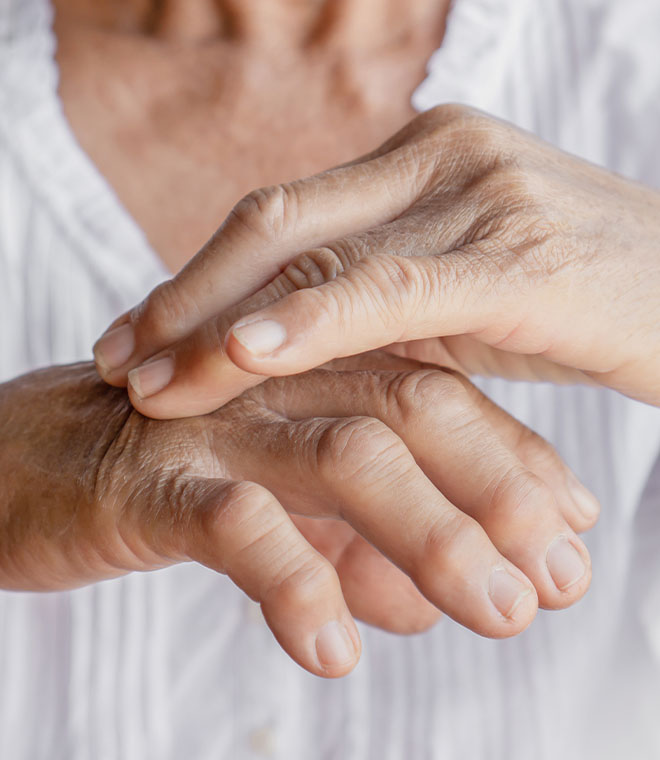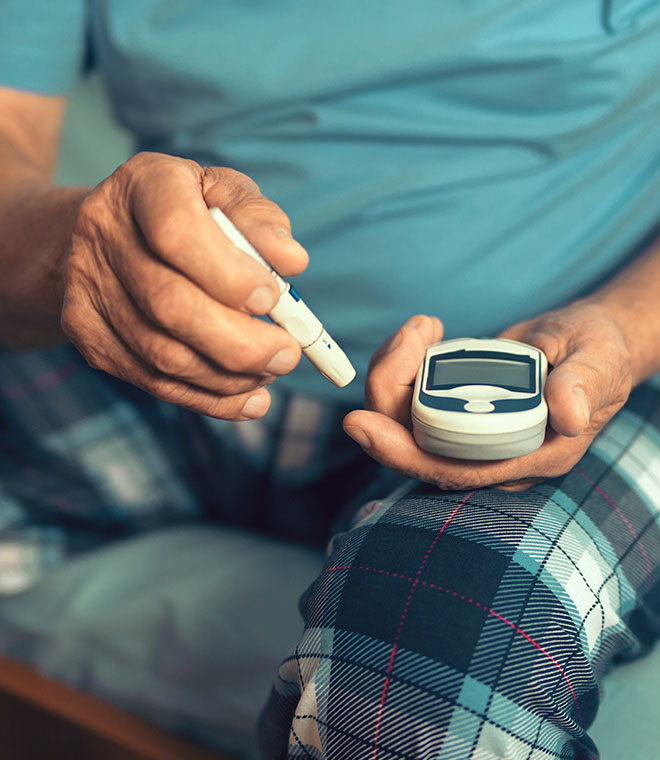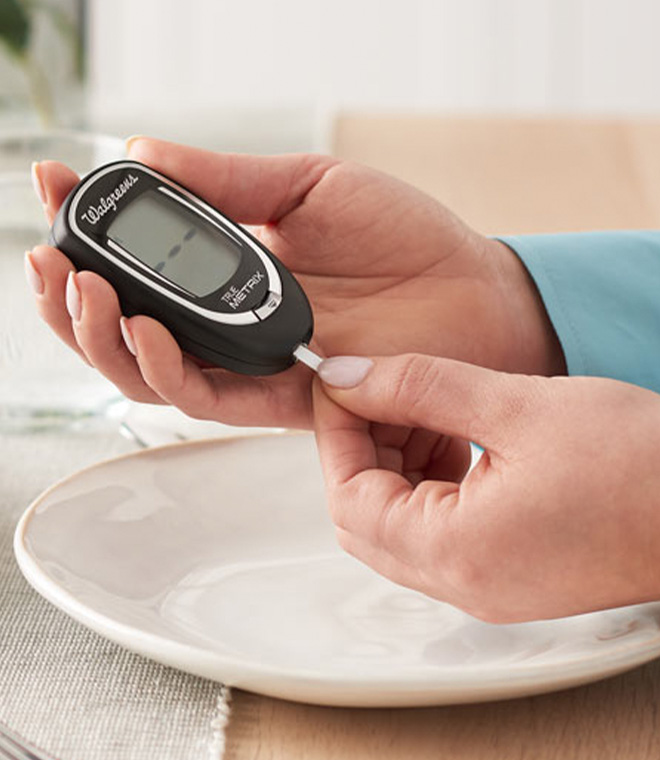Health
Heart disease information
By Jenilee Matz, MPH Jan 21, 2021 • 15 min
Every 40 seconds, someone in the United States has a heart attack, and every 36 seconds, one person dies from a heart disease-related event.
Heart disease is the leading cause of death in the U.S., accounting for 1 in every 4 deaths. Often thought of as a man's disease, heart disease in women is nearly just as common as heart disease in men. These heart disease statistics are alarming, but there are ways to lower your risk of heart issues. Learn more heart disease facts, from what causes the disease to how to prevent it.
What is heart disease?
Heart disease is a general term used to describe conditions that affect the heart or blood vessels. There are many different forms of heart disease.
What causes heart disease?
Most types of heart disease are caused by atherosclerosis (hardening and narrowing of the arteries due to the buildup of plaque around the artery wall). When the arteries become narrow, it's more difficult for blood to flow through them. If a blood clot forms, it can block the flow of blood. If this happens in an artery that supplies the heart or brain, a heart attack or stroke can occur.
It isn't known exactly what causes atherosclerosis, but it may start when the inner lining of the artery becomes damaged. Smoking and having high cholesterol, triglyceride and blood pressure levels are believed to contribute to this damage.
Types of heart disease
There are several conditions that fall under the category of heart disease. Some of them include:
- Coronary heart disease or coronary artery disease, the most common type of disease of the heart, involves narrowing of the arteries that supply the heart. Coronary heart disease is also called ischemic heart disease. Ischemia is the term for blood flow that's reduced or restricted in a certain part of the body.
- Heart attack. When blood flow to a part of the heart is blocked by a blood clot, a heart attack occurs. A heart attack is often the first sign of coronary heart disease.
- Stroke. In an ischemic stroke, a blood vessel that supplies the brain becomes blocked, often due to a blood clot. In a hemorrhagic stroke, a blood vessel in the brain bursts. Reduced blood supply to the brain can cause cells to die, which can result in the loss of body functions controlled by the brain, such as talking and walking.
- Arrhythmia is an abnormal heart rhythm. The heart can beat too fast, too slow or irregularly, which affects how well your heart works.
- Congestive heart disease or congestive heart failure doesn't mean the heart stops beating. Rather, heart failure happens when the heart doesn't pump blood as well as it should. As a result, the body doesn't receive the right amount of blood and oxygen.
- Hypertensive heart disease refers to heart problems caused by hypertension (high blood pressure). In high blood pressure, the pressure inside the arteries is too high. The heart needs to work harder to pump against this pressure, which can cause the heart muscle to thicken over time. If the muscle becomes so thick that it doesn't get oxygen, angina (chest pain) can occur. High blood pressure can also cause the blood vessel walls to thicken, which can cause a heart attack or stroke. Untreated high blood pressure can also lead to heart failure.
- Valvular heart disease or heart valve diseases affect one of the heart's four valves. These issues can be present at birth or due to an infection, heart attack, heart disease or heart damage. These valves should open up to allow blood to flow from your heart, and then they should shut to stop blood from flowing backward. Valvular heart disease happens when these valves don't work properly. Blood can leak through the valve in the wrong direction (regurgitation), the mitral valve may have floppy flaps and not close well (mitral valve prolapse) or the valve may not open enough and end up blocking blood flow (stenosis).
- Congenital heart disease or a congenital heart defect is present at birth. It's a problem with the structure of the heart and is the most common kind of birth defect. Holes in the heart, abnormal valves and abnormal heart chambers are examples of congenital heart disease.
- Rheumatic heart disease is permanent damage to the heart muscle and valves from rheumatic fever, an inflammatory disease that can affect the heart, joints, skin or brain. It's caused by an untreated or under-treated infection with streptococcal bacteria. Rheumatic fever is rare in the U.S.
Symptoms of coronary heart disease
Angina is a common symptom of coronary heart disease. It may feel like pain, pressure or a squeezing sensation in your chest, shoulders, arms, neck, jaw or back. Angina can feel like indigestion, and it tends to feel worse when you're physically active or under emotional stress. It often goes away with rest. Shortness of breath is another common symptom of the condition.
However, coronary heart disease doesn't always cause symptoms. In silent coronary heart disease, the first signs of heart disease are symptoms of a heart attack, heart failure or arrhythmia. Heart attack symptoms include:
- Pain, pressure, squeezing or fullness in the center of your chest; it may stay constant or come and go
- Pain or discomfort in one or both arms, neck, jaw, back or stomach
- Shortness of breath
- Breaking out in a cold sweat
- Nausea
- Lightheadedness
The most common sign of a heart attack in both men and women is chest pain or discomfort. But heart disease symptoms in men and heart disease symptoms in women can differ. Women are more likely than men to experience other common symptoms, especially shortness of breath, nausea, vomiting and jaw or back pain during a heart attack.
Signs of heart failure include:
- Shortness of breath or trouble breathing
- Intense fatigue
- Swelling of the feet, ankles, legs or abdomen
Symptoms of arrhythmia can include:
- Palpitations or a fluttering feeling in the heart
- A feeling like your heart is skipping beats or beating too fast
Heart disease tests
There are many tests used to detect heart disease. The specific tests you'll need depend on what type of heart disease your healthcare provider thinks you have. Your provider will likely do an exam and ask about your personal and family health history. You'll probably also have blood tests and a chest X-ray. Other tests used to diagnose heart disease include:
- Electrocardiogram (ECG or EKG): An ECG records electrical signals as the heart contracts and relaxes. It can detect abnormal heartbeats, damage, blood flow problems and heart enlargement.
- Holter monitoring: A holter monitor is a small device that records a continuous ECG over 24–72 hours. It's used to detect heart rhythm abnormalities that weren't found during an ECG.
- Echocardiogram: This uses an ultrasound to show images of your heart's structure and how well it works.
- Stress test: This test involves raising your heart rate with exercise or medication, while your healthcare provider performs tests to see how your heart responds.
- Cardiac catheterization: For this test, your healthcare provider inserts a short tube (sheath) into a vein or artery in your leg or arm. Then they insert a longer tube (guide catheter) through the sheath and guide it through the artery until it reaches your heart. This allows the pressure in your heart chambers to be measured. Your provider can also insert a dye, which shows up on X-rays, to see blood flow to your heart, blood vessels and valves.
- Cardiac computerized tomography (CT) scan: In a CT scan, you'll lie in a large machine while it rotates around your body and takes images of your heart using an X-ray and computer.
- Cardiac magnetic resonance imaging (MRI): In an MRI, you'll lie inside a long, tube-like machine that uses magnets, radio waves and a computer to take detailed pictures of your chest.
Heart disease treatment
Unfortunately, the idea of reversing heart disease is a myth. Heart disease is a lifelong condition. However, with lifestyle changes and possibly medications, you can control heart disease and reduce the risk of your first or another heart attack. In some cases, your cardiologist (heart doctor) may recommend a surgery or procedure to improve blood flow to the heart. Make sure you see your provider as often as advised and follow your treatment plan as directed.
Lifestyle changes used to manage heart disease include:
- Following a heart-healthy or heart disease diet. This involves eating a variety of nutrient-rich foods, including fruits, vegetables, whole grains, low-fat and nonfat dairy products, skinless poultry and fish, nuts, legumes and nontropical vegetable oils, such as olive and canola oils. Limit foods high in saturated and trans fats, added sugars and sodium.
- Exercising regularly, as directed by your heart doctor. Your provider may ask you to take special precautions during exercise.
- Reaching and maintaining a healthy weight.
- Quitting smoke and avoiding secondhand smoke. If you need help quitting, Walgreens can support you.
- Taking care of your teeth. Good dental health reduces the risk of infections that can harm your heart.
There are many medications used for heart disease treatment, including:
- Antiplatelets such as aspirin work to keep blood clots from forming and help keep the arteries open.
- Anticoagulants or blood thinners keep blood from clotting or prevent blood clots from getting bigger.
- Digitalis preparations help a weakened heart pump harder and can slow down some fast heart rhythms.
- Angiotensin-converting enzyme (ACE) inhibitors help control high blood pressure by stopping the production of a chemical that narrows blood vessels. They also help the heart pump blood better after a heart attack and can aid in heart failure.
- Angiotensin II receptor blockers (ARBs) keep blood pressure levels from rising.
- Angiotensin-receptor neprilysin inhibitors (ARNIs) improve blood flow, decrease sodium retention and reduce strain on the heart.
- Beta-blockers lower blood pressure and help reduce how hard the heart works.
- Vasodilators, or nitrates, are used to relax blood vessels and reduce chest pain.
- Calcium channel blockers relax blood vessels, lower high blood pressure and ease chest pain.
- Diuretics (water pills) treat high blood pressure by decreasing fluid in the body.
- Cholesterol-lowering medicines bring down low-density lipoprotein (LDL or "bad") cholesterol levels.
Risk factors for heart disease
There are many things that can raise your risk of heart disease. Certain risk factors are out of your control, such as your age and having a family history of early heart disease. Men age 45 and older and women age 55 and older have the highest risk of heart disease.
The main controllable risk factors for heart disease include having high blood pressure, having high cholesterol and smoking. Other heart disease risk factors within your control include being overweight or obese, having a poor diet, being physically inactive and drinking excessive amounts of alcohol. Having diabetes also increases your chance of heart disease.
How to prevent heart disease
Heart disease prevention begins with leading a healthy lifestyle. Maintaining a healthy weight, getting regular exercise, eating a nutritious diet, limiting alcohol intake and quitting smoking can help reduce your chance of heart problems. Easing stress and getting enough sleep can also lower your risk. If you have diabetes or high blood pressure, cholesterol or triglycerides, follow your treatment plan as directed by your healthcare provider. Keeping these levels in check can help prevent heart disease.
Clinically reviewed and updated January 2021.
Sources:
1. https://www.cdc.gov/heartdisease/index.htm
2. http://www.heart.org/en/health-topics/consumer-healthcare/what-is-cardiovascular-disease
3. https://www.cdc.gov/heartdisease/facts.htm
5. https://medlineplus.gov/ency/article/000163.htm
6. https://medlineplus.gov/heartvalvediseases.html
7. https://medlineplus.gov/heartfailure.html
8. http://www.who.int/cardiovascular_diseases/en/cvd_atlas_01_types.pdf
9. https://www.nhlbi.nih.gov/health-topics/heart-healthy-living
10. https://www.heart.org/en/health-topics/cholesterol/about-cholesterol/atherosclerosis
11. http://www.heart.org/en/health-topics/heart-attack/warning-signs-of-a-heart-attack
12. https://www.mayoclinic.org/diseases-conditions/heart-disease/diagnosis-treatment/drc-20353124
13. http://www.heart.org/en/health-topics/heart-attack/treatment-of-a-heart-attack/cardiac-medications
14. https://www.heart.org/en/health-topics
16. https://www.nhlbi.nih.gov/health-topics/coronary-heart-disease
17. https://www.hopkinsmedicine.org/health/conditions-and-diseases/rheumatic-heart-disease



